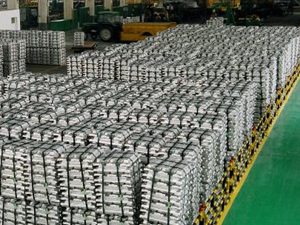
[miningmx.com] – WHILST investors keeping faith with commodities can look forward to a recovery, the factors influencing the medium to long-term outlook for commodities will be similar to those before the onset of the so-called super-cycle.
That seems to be the message set down by Kevin Norrish of Barclays Research who said that the synchronous price upswing in commodity prices between 2004 and 2008 was unlikely to be repeated because commodities would be driven more by specific supply and demand fundamentals.
“What we expect is a return to commodity risk,” he said at a presentation in Johannesburg.
Commenting on short-term conditions in the commodity market, Norrish said the recent sell-off had been “overdone”. When the broader upswing for commodities returned it could be “surprisingly strong,” he said.
It was supply, however, that was likely to lead to a less uniform market going forward owing to cutbacks in capital projects by the world’s major mining companies – falling to just over $40bn in 2015 from a peak of $70bn in 2012 – as well as to infrastructure and delivery constraints.
Infrastructure and logistics availability was styled by Norrish as ‘the new commodity battleground’ with supply growth in some regions so rapid that it was overwhelming available infrastructure. There was little chance of rapid response from infrastructure owners owing to the cost and lead times of building rail and port facilities.
“With diverse supply outlook and varying degrees of infrastructure shortage, expertise in individual commodities is going to become important once again,” said Norrish. Barclays had deployed about 30 analysts to help determine the destiny of the commodity complex, he said.
From a demand perspective, soft commodities such as rice, wheat and soybeans would be most affected by the managed reduction in Chinese consumption although platinum and silver were also thought to be the biggest losers in terms of Chinese demand.
The European diesel autocatalyst market would remain influential in the platinum price, a market described by Norrish as “not the most dynamic”.
Supply of platinum would be influenced by labour and employer relations. “Sadly this is the risk again,” he said on a day when the Associated Mineworkers & Construction Union (Amcu) is planning a return to strike action at Lonmin.
Steel, zinc and copper intensity use in China would also slow over the next four years, said Norrish.
Generally-speaking, demand prospects look much better than is being priced into commodities currently, he said. He added, however, that the outlook for gold and silver was muted at best.
The central bank sales in Cyprus – whilst barely making a dent on its deficit – sent a psychological message that central banks globally would not be buying gold aggressively, he said. Unless China liberalised its approach to gold purchases, the yellow metal would trend downwards, he said.
The ‘mean reversion’ of commodities to either their replacement cost (copper, crude oil and platinum group metals) or their cash costs (aluminium, nickel and lead) required an understanding of their supply/demand specifics. It would also mean more volatility in the commodity markets in the future.










